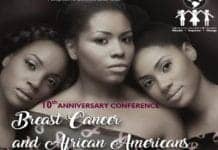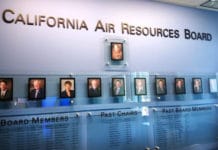
by Ahimsa Porter Sumchai, MD

“Biomonitoring is the next logical, critical step for us to take in addressing threats to public health.” – Sen. Deborah Ortiz, D-Sacramento, author of SB 680, The Healthy California Biomonitoring Program
Modern scientists can detect toxic chemicals in human tissue and body fluids using the new science of biomonitoring. In 2002, a study called “The Body Burden” found dangerously high levels of toxic chemicals in body fluids of volunteers.
Body burden is a popular term used by environmental scientists to describe the total accumulation of toxins in our bodies or pollution in people! By analogy, climate change and human activities are increasing the body burden of the planet Earth.

Human biomonitoring relies on a laboratory method called mass spectrometry that ionizes chemicals and sorts the ions based on mass to charge ratio. “Mass spec” analyzes samples of urine, blood, tissue, breast milk, umbilical cord and even baby teeth for multiple toxic “analytes.”
In 2004, researchers found on average 200 industrial chemicals in umbilical cord blood collected by the Red Cross from 10 babies born in U.S. hospitals. These compounds ranged from pesticides to byproducts of coal, gasoline and garbage.
A 2019 investigation, led by UCSF Professor of Reproductive Medicine Tracey Woodruff, PhD, MPH, used “mass spec” to detect 56 chemicals in umbilical cord blood from women giving birth at two San Francisco hospitals, Mission Bay and San Francisco General. The body burden of toxic chemicals was higher in low income women who gave birth at the county hospital.
In 2003, a network of environmental activists and scientists, public health experts, faith and labor activists championed the California Body Burden Campaign to make California establish a statewide biomonitoring program. In 2008, meetings were conducted in Oakland, California, to guide implementation of the program.
The Bayview Hunters Point community is located in heavily industrialized southeast San Francisco. Historically, it has been one of the nation’s high risk communities.

Epidemiological research documents that this region, less than 2 square miles in area, hosts hundreds of polluting industries, underground petroleum storage tanks, freeways, highways and dozens of pulverizing construction projects, including residential development at the Hunters Point Shipyard, a federal Superfund site. Adjacent to the federal Superfund site are schools and a densely populated moderate to low income, ethnically diverse neighborhood home to the city’s largest childhood population.
“Science is creating new compounds and chemicals that are finding their way into mother’s milk and causing new problems. A central element of the precautionary approach is careful assessment of available alternatives using the best available science.” – Precautionary Principle Ordinance in the Environment Code of the City and County of San Francisco

In July of 2003, the San Francisco Board of Supervisors adopted the Precautionary Principle as the first chapter of its Environment Code. The ordinance states, “Where threats of serious or irreversible damage to people or nature exist, lack of full scientific certainty about cause and effect shall not be viewed as sufficient reason for the City to postpone cost effective measures to prevent degradation of the environment or protect the health of its citizens.” Thus, the Precautionary Principle Policy Statement codifies the civic duty to take anticipatory action to prevent harm.
A Superfund site is any land in the United States that has been contaminated by hazardous waste and identified by the Environmental Protection Agency as a candidate for cleanup because it poses a risk to human health and the environment. These sites are placed on the National Priorities List and assigned a Hazard Ranking Score.

The average HRS for over 1,300 properties nationwide on the NPL is 50 percent. The overall EPA HRS for the Hunters Point Shipyard pre-clean was 80 percent. The HRS for groundwater migration was 100 percent risk to nearby sensitive receptors.
Despite the adoption of the Precautionary Principle, in 2004 the San Francisco Board of Supervisors accepted transfer of land slated for residential development on the federal Superfund site at the Hunters Point Shipyard. The environmental impact review for the proposed development documented numerous unmitigated hazards to human health and safety from toxic air and residual soil contaminants including particulates, volatile organic compounds, lead and asbestos.

The environmental impact report (EIR) withstood legal challenge on grounds the economic benefits of the project to the low income minority community outweighed well documented risks to public health.
From the very beginning, life threatening problems arose due to grading of asbestos laden bedrock and the failure of construction site air monitors to detect toxic dust exposures. Many believed the air monitors were deliberately deactivated to conceal dangerous exceedences in asbestos and particulate emissions.
The Environmental Health Section of the San Francisco Department of Public Health documented a surge in hospitalizations for adult and pediatric asthma, empyema and congestive heart failure by 2005 when construction activities began. The Bay Area Air Quality Management District 2007 report card found air pollution in Bayview Hunters Point ranked in the 80th percentile for particulates, carbon monoxide, nitrogen oxides and volatile organic compounds and in the 90th percentile for sulfur.

The EPA Office of Air and Radiation identifies particulate matter to be a mixture of solid and liquid droplets suspended in air made of acids, organic chemicals, metals, soil, dust, allergens and, in the case of the Hunters Point Shipyard where radiation contaminated soils are undergoing remediation, volatilized radionuclides!
Particulate exposure has been directly linked to hypertension, heart attacks, pediatric and adult asthma, congestive heart failure and pre-term infant births and increased infant mortality rates. The World Health Organization recognizes air pollution as a carcinogen and a leading cause of lung cancer among non-smokers.
All of these conditions are health disparities in Bayview Hunters Point, where infant mortality rates increased from 12.5 per 1,000 live births to 15 per 1,000 live births – across all ethnic groups.

On March 1, 2009, community scientists in partnership with academic researchers from the University of California San Francisco and San Francisco State University applied for $2 million in funding from the National Institute of Environmental Health Sciences to conduct community exposure research drawing upon the powerful new science of biomonitoring to establish cause and effect relationships between toxins in the environment, their detection and disease expression among members of the exposed community.
The investigative team was led by myself, along with Raymond Tompkins, Peter Palmer, PhD, and UCSF Clinical Professor of Pediatrics Carol Miller, MD. Dr. Kim Hooper of the California Environmental Laboratory in Berkeley and Lori Copan, PhD, MPH, of the California Biomonitoring Project consulted on the proposal. While the 2009 research initiative was not funded, it planted seeds that have germinated a decade later to advance the implementation of a community-based biomonitoring program in partnership with academic medicine and research.
Driving the environmental health and justice movement in southeast San Francisco is a sense of urgency and a need to protect current and future residents from an “avalanche” of toxic chemicals linked to the community’s inordinate incidences of cardiopulmonary disease, cancers, and immune, neurological, and behavioral disorders.

On March 29, 2019, community scientists in partnership with academic researchers from the University of California San Francisco presented preliminary findings from the January 2019 launch of the Hunters Point Community Biomonitoring Program to the California Office of Environmental Health Hazard Assessment.
The preliminary investigation relies on a simple urinalysis conducted by Genova Diagnostics Laboratory using mass spectrometry to detect 35 toxic and nutrient elements including many of the major toxic metals and radionuclides known to be present in industrial and occupational settings. Many of the documented chemicals and radionuclides of concern at the federal Superfund site can be analyzed with a seven-day turnaround.

The community-academic partnership has blossomed to include the support of UCSF Vice Chancellor and Dean of the School of Medicine Talmadge King, MD; Tracey Woodruff, PhD, MPH; retired UCSF clinical epidemiologist Mark Alexander, PhD; Daniel Hirsch, founder of the Committee to Bridge the Gap, a non-profit nuclear policy organization and pathologist; and UCSF Associate Professor Robert Gould, MD, president of Physicians for Social Responsibility. Community scientist Raymond Tompkins consulted on the launch of the program.
The people of Bayview Hunters Point deserve nothing less than protection from the adverse impacts to health and safety from poverty, racism and environmental injustice.

The medical necessity for implementation of a human biomonitoring program for residents living within a one mile radius of the federal Superfund site at the Hunters Point Shipyard is met by understanding the scope of contamination of this property placed on the National Priorities List in 1989 and assigned Hazard Ranking Scores of 80-100 percent based on risk of exposure, number of toxins and proximity to sensitive receptors, including over 20 schools and daycare centers, vulnerable neighborhoods and San Francisco Bay.
The Hunters Point Community Biomonitoring Program strives to advance environmental public health through the establishment of a voluntary toxic registry and hazard mapping surveillance system designed to:
- Optimize access to high quality care.
- Optimize nutrition and lifestyle to prevent and mitigate the expression of toxic environmental diseases.
- Optimize the early detection of diseases linked to environmental and occupational hazards through implementation of an environmental health referral network.
SF Bay View Health and Environmental Science Editor Ahimsa Porter Sumchai, M.D., founding chair of the Hunters Point Naval Shipyard Restoration Advisory Board’s Radiological Subcommittee and contributor to the 2005 Draft Historical Radiological Assessment, can be reached at asumchai@gmail.com. Dr. Sumchai is also president and medical director of Golden State MD Health & Wellness, an author and a UCSF and Stanford trained researcher.

 Store
Store












